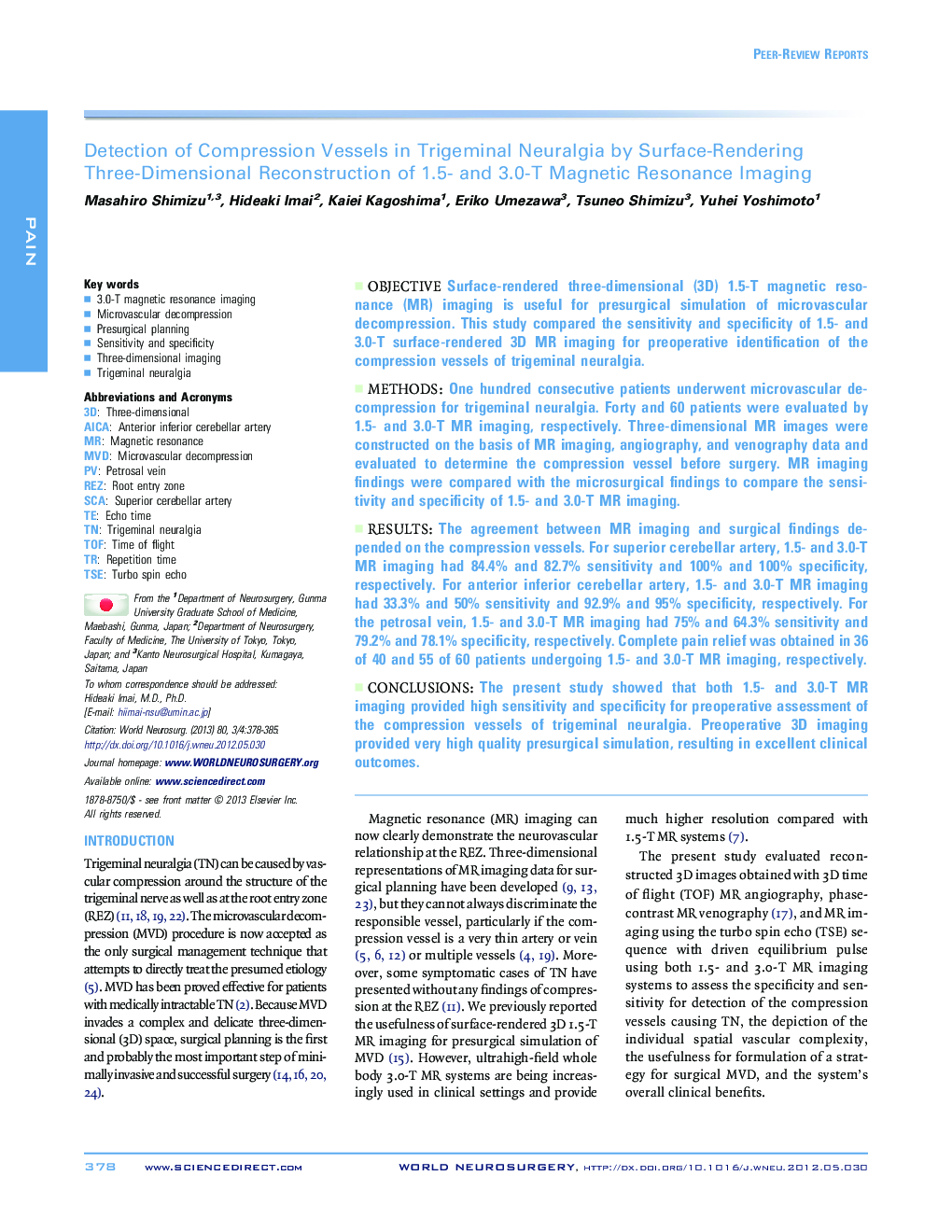| Article ID | Journal | Published Year | Pages | File Type |
|---|---|---|---|---|
| 3096124 | World Neurosurgery | 2013 | 8 Pages |
ObjectiveSurface-rendered three-dimensional (3D) 1.5-T magnetic resonance (MR) imaging is useful for presurgical simulation of microvascular decompression. This study compared the sensitivity and specificity of 1.5- and 3.0-T surface-rendered 3D MR imaging for preoperative identification of the compression vessels of trigeminal neuralgia.MethodsOne hundred consecutive patients underwent microvascular decompression for trigeminal neuralgia. Forty and 60 patients were evaluated by 1.5- and 3.0-T MR imaging, respectively. Three-dimensional MR images were constructed on the basis of MR imaging, angiography, and venography data and evaluated to determine the compression vessel before surgery. MR imaging findings were compared with the microsurgical findings to compare the sensitivity and specificity of 1.5- and 3.0-T MR imaging.ResultsThe agreement between MR imaging and surgical findings depended on the compression vessels. For superior cerebellar artery, 1.5- and 3.0-T MR imaging had 84.4% and 82.7% sensitivity and 100% and 100% specificity, respectively. For anterior inferior cerebellar artery, 1.5- and 3.0-T MR imaging had 33.3% and 50% sensitivity and 92.9% and 95% specificity, respectively. For the petrosal vein, 1.5- and 3.0-T MR imaging had 75% and 64.3% sensitivity and 79.2% and 78.1% specificity, respectively. Complete pain relief was obtained in 36 of 40 and 55 of 60 patients undergoing 1.5- and 3.0-T MR imaging, respectively.ConclusionsThe present study showed that both 1.5- and 3.0-T MR imaging provided high sensitivity and specificity for preoperative assessment of the compression vessels of trigeminal neuralgia. Preoperative 3D imaging provided very high quality presurgical simulation, resulting in excellent clinical outcomes.
